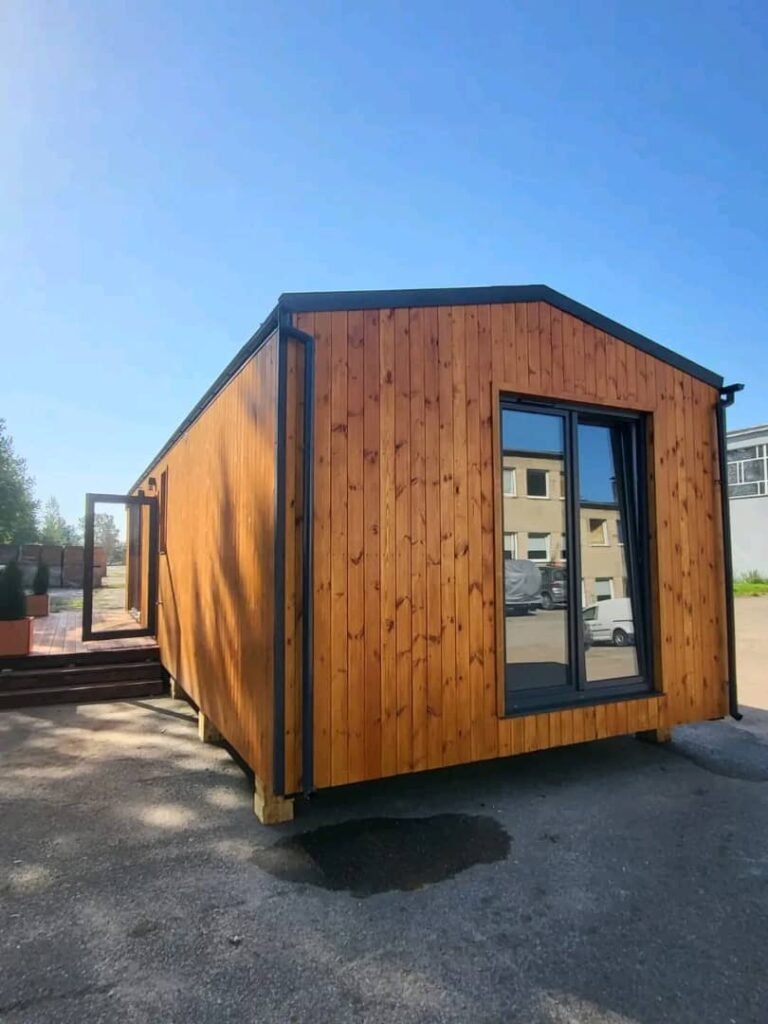
A shipping container cafe is an innovative dining concept where retired shipping containers are transformed into unique, often trendy coffee shops or small restaurants. These repurposed structures offer a blend of industrial chic, a confluence of sustainability, cost-effectiveness, innovative and eco-friendly design, creating distinctive spaces for food and beverage service.
The popularity of shipping container cafes has surged in recent years, riding the wave of sustainable architecture and adaptive reuse. This trend aligns with growing consumer interest in unique dining experiences and environmentally conscious business practices. From urban centers to beachfronts, these unconventional cafes are popping up worldwide, attracting customers with their novel approach to hospitality Shipping container cafes are more than just a novelty; they represent a confluence of sustainability, cost-effectiveness, and innovative design.
History and Origins
The concept of repurposing shipping containers dates back to the 1960s, when these standardized metal boxes revolutionized global trade. As shipping companies began retiring older containers, creative architects and designers saw potential in their sturdy, modular structure.
The trend of container cafes likely started in the early 2000s, coinciding with the broader movement of container architecture. Pioneers in this field recognized that these containers could be easily modified to create compact, mobile spaces ideal for pop-up businesses. The first container cafes emerged in trendsetting cities like London, Amsterdam, Melbourne and San Francisco, quickly capturing public imagination and spreading to other urban areas globally.
Advantages of Shipping Container Cafes
Sustainability and eco-friendliness:
Repurposing shipping containers gives new life to materials that might otherwise be discarded. This upcycling reduces waste and the demand for new construction materials. Many container cafes also incorporate other eco-friendly features like solar panels or rainwater harvesting systems.
Cost-effectiveness:
Converting a shipping container is often less expensive than traditional construction. The basic structure is already in place, reducing labor and material costs. This lower initial investment makes it easier for entrepreneurs to enter the cafe business.
Mobility and flexibility:
Shipping container cafes can be relatively easy to relocate. This flexibility allows owners to test different locations or move seasonally to maximize business opportunities. It’s also useful for temporary installations at events or festivals.
Unique aesthetic appeal:
The industrial look of shipping containers gives these cafes a distinctive appearance that stands out in urban landscapes. This unique aesthetic often becomes a key part of the cafe’s brand identity and attracts customers looking for novel experiences.
Quick setup and lower barriers to entry:
Compared to traditional cafe construction, shipping container conversions can be completed more quickly. This faster timeline allows entrepreneurs to start generating revenue sooner, reducing financial risk.
Shipping Container Cafe Design and Construction
Modifying containers for cafe use typically involves several steps:
- Cutting openings for windows, doors, and service counters
- Installing insulation to regulate temperature
- Adding electrical wiring and plumbing
- Fitting out the interior with catering equipment and customer seating
Common features and modifications include:
- Fold-out awnings or decks to expand usable space
- Large windows or glass walls to create an open feel
- Custom paint jobs or exterior cladding for brand identity
- Rooftop gardens or seating areas
Challenges in converting containers include:
- Ensuring proper insulation against heat, cold, and condensation
- Meeting local building codes and health regulations
- Modifying the structure without compromising its integrity
- Installing adequate ventilation and climate control systems
Examples of Successful Shipping Container Cafes
Some notable examples include:
- The Grounds of Alexandria (Sydney, Australia): A sprawling complex featuring multiple container structures in a garden setting
- Wahaca Southbank (London, UK): A Mexican restaurant made from eight shipping containers, showcasing vibrant colors and sustainable design
- Container Park (Las Vegas, USA): An entire shopping and dining complex made from shipping containers, including several cafes
These successful examples often stand out due to their innovative use of space, integration with their surroundings, and ability to create a unique atmosphere that goes beyond the novelty of the container structure.
Considerations for Starting a Shipping Container Cafe
Legal and zoning considerations: Entrepreneurs must navigate local zoning laws, which may not explicitly address container structures. Some areas may require special permits or variances.
Health and safety regulations: Like any food service establishment, container cafes must meet health department standards for food preparation, storage, and sanitation. The unique structure may require creative solutions to meet these requirements.
Choosing the right location: Location is crucial for any cafe. For container cafes, considerations might include accessibility, visibility, available utilities, and whether the area’s demographic appreciates this type of innovative concept.
Impact on Urban Landscapes and Communities
Container cafes can play a role in urban renewal by:
- Activating underutilized spaces like vacant lots or parking areas
- Bringing new life and foot traffic to neglected neighborhoods
- Providing affordable spaces for local entrepreneurs to start businesses
These cafes often become community hubs, offering:
- Unique gathering spaces for locals
- Venues for community events or art installations
- Opportunities for social interaction and community building
Future Trends
Predictions for the future of shipping container cafes include:
- Increased integration of technology, such as automated ordering systems or smart energy management
- Greater focus on multi-use spaces, combining cafes with co-working areas or retail
- Expansion into more rural or suburban areas as the concept gains wider acceptance
Potential innovations may include:
- Modular designs allowing for easy expansion or reconfiguration
- Integration of vertical farming or aquaponics systems
- Use of advanced materials for better insulation and energy efficiency
Shipping container cafes represent a fusion of sustainability, innovation, and creative design in the food service industry. Their appeal lies in their uniqueness, flexibility, and alignment with modern values of environmental consciousness and experiential dining. As urban spaces continue to evolve, these adaptive, mobile structures are likely to play an increasingly significant role in shaping the future of casual dining and community spaces.